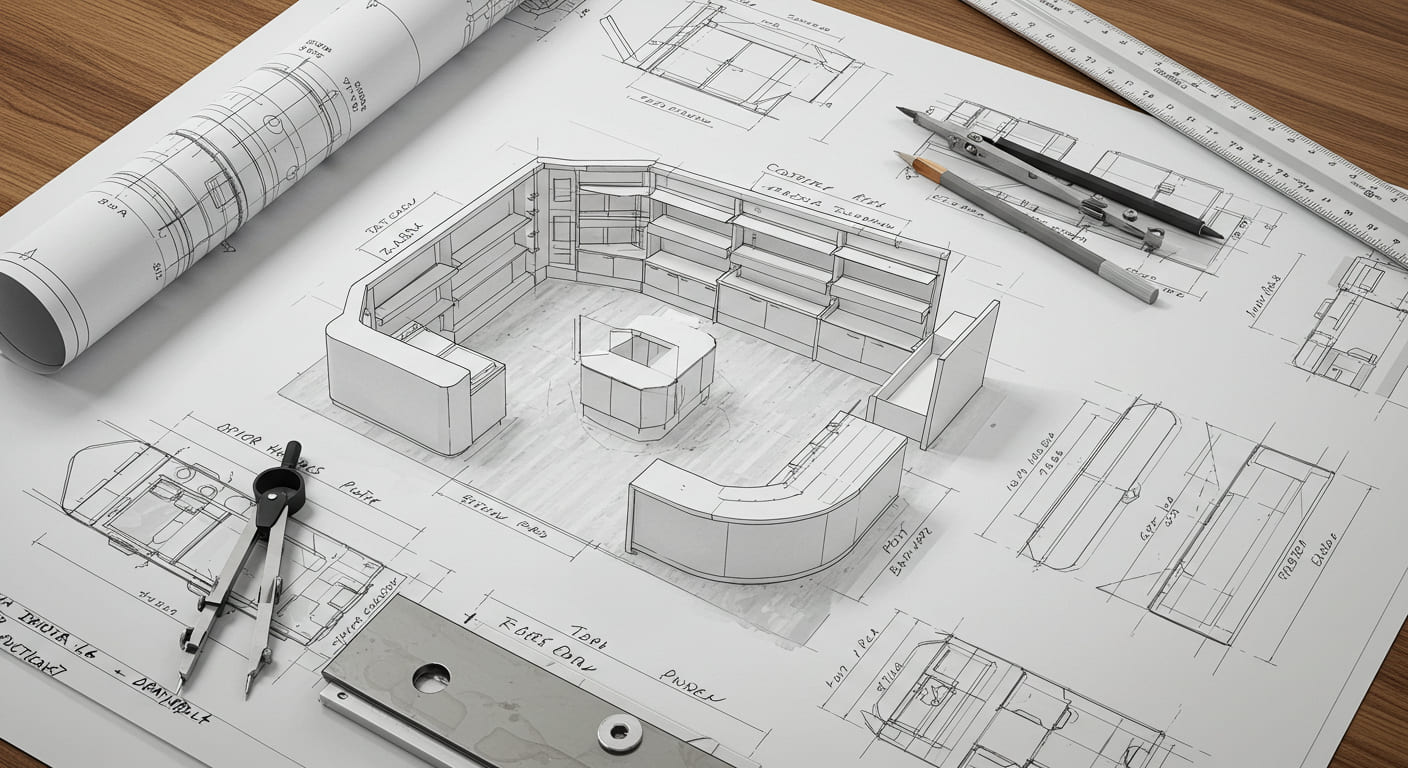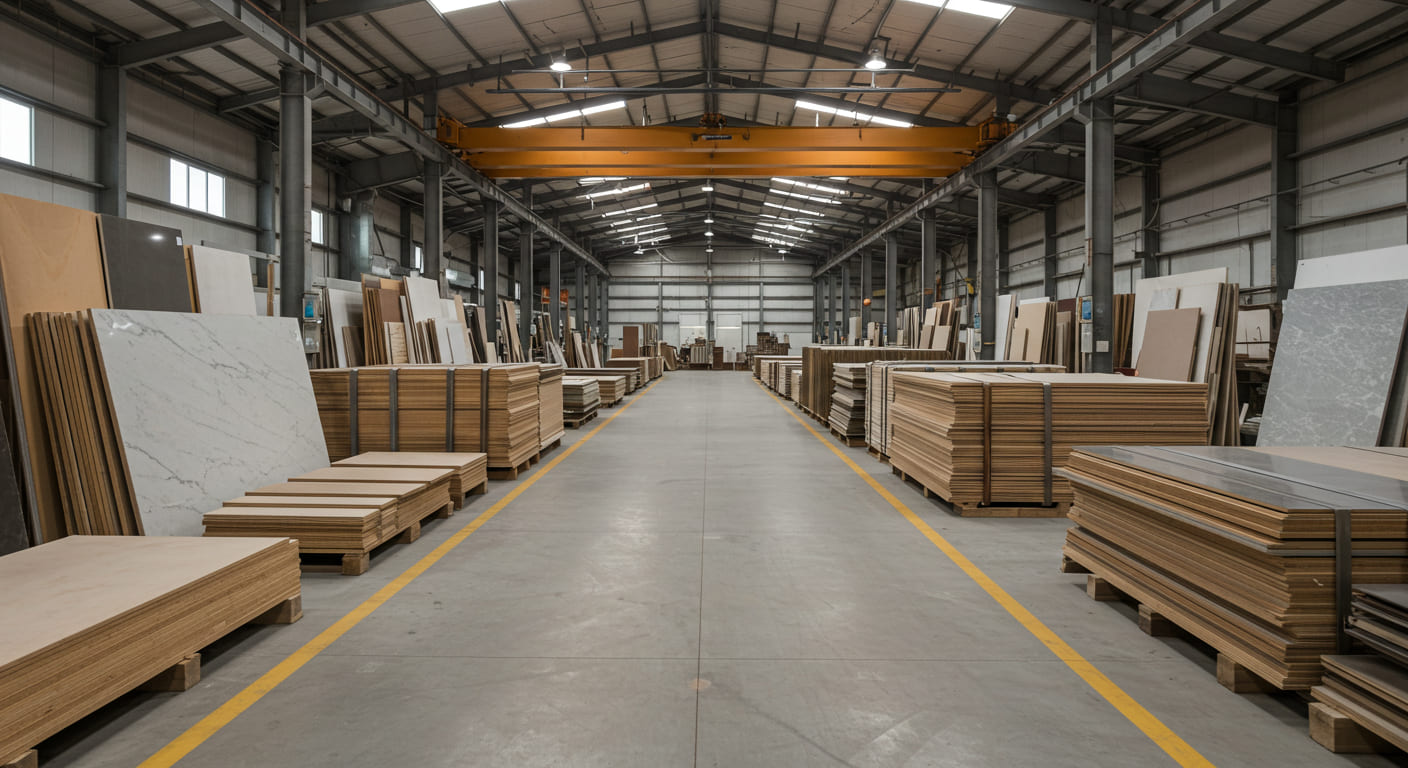The physical space of a retail store is a powerful tool that communicates a brand’s identity, influences customer behavior, and ultimately drives sales. One of the critical elements in creating this environment is shop fitting—the process of designing, manufacturing, and installing fixtures and fittings within a retail space. However, many retailers often overlook a crucial aspect of shop fitting: lead times. Understanding lead times in shop fitting production is essential for retailers who want to ensure their stores are ready on time and meet their quality standards.

What Are Lead Times in Shop Fitting?
Lead time refers to the period between the initiation of a shop fitting project and its completion. It encompasses several stages, including design, material procurement, manufacturing, quality control, and delivery. Each of these stages requires careful planning and coordination, and any delays in one stage can have a cascading effect on the entire project.
In the context of shop fitting, lead times are influenced by various factors, such as the complexity of the design, the availability of materials, the capacity of the manufacturer, and the logistics involved in delivering and installing the fittings. Retailers need to have a clear understanding of these factors to manage their expectations and plan their projects effectively.
The Importance of Accurate Lead Time Estimates
Accurate lead time estimates are crucial for retailers for several reasons. First and foremost, they enable retailers to plan their store openings or renovations more effectively. A delay in the delivery of shop fittings can result in missed deadlines, which can have significant financial implications. For instance, a delayed store opening means lost sales opportunities and potential damage to the brand’s reputation.
Additionally, accurate lead time estimates allow retailers to coordinate other aspects of their store preparation, such as hiring staff, stocking inventory, and launching marketing campaigns. When all these elements are aligned with the shop fitting schedule, retailers can ensure a smooth and successful store launch.

Factors That Influence Lead Times
Several factors influence the lead times in shop fitting production, and understanding these factors can help retailers better manage their projects.
1. Design Complexity
The complexity of the shop fitting design is one of the primary factors affecting lead times. Custom designs that require intricate detailing, unique materials, or specialized manufacturing processes naturally take longer to produce. For example, a retailer looking to create a highly customized flagship store with bespoke fittings will likely face longer lead times than a retailer opting for standard, off-the-shelf fittings.
To mitigate delays caused by design complexity, retailers should work closely with their shop fitting suppliers during the design phase. Clear communication of design requirements and expectations can help ensure that the supplier can provide an accurate lead time estimate and identify any potential challenges early in the process.
2. Material Availability
The availability of materials also plays a significant role in determining lead times. Some materials may have longer procurement times due to their rarity, the need for importation, or supply chain disruptions. For instance, if a retailer chooses a specific type of wood that is not readily available, the lead time will be extended to account for the time needed to source and deliver the material.
To avoid material-related delays, retailers should discuss material options with their shop fitting supplier during the planning phase. Choosing materials that are readily available or have shorter procurement times can help reduce overall lead times.
3. Manufacturing Capacity
The capacity of the shop fitting manufacturer is another critical factor influencing lead times. Manufacturers with limited production capacity may have longer lead times, especially if they are working on multiple projects simultaneously. Additionally, the complexity and volume of the order can impact the time required for manufacturing. Large-scale projects or those requiring specialized production techniques may take longer to complete.
Retailers can manage this risk by selecting a shop fitting supplier with sufficient manufacturing capacity to handle their project within the desired timeframe. It is also advisable to discuss production schedules with the supplier to ensure that the project is prioritized appropriately.
4. Quality Control
Quality control is a vital aspect of shop fitting production that can affect lead times. Ensuring that all fittings meet the required quality standards involves thorough inspections, testing, and potential rework if any issues are identified. While quality control is essential to ensure that the final product meets the retailer’s expectations, it can also add time to the production process.
Retailers should be aware that quality control is a necessary step that should not be rushed. Working with a reputable shop fitting supplier that has a robust quality control process in place can help minimize delays while ensuring that the final product meets the highest standards.

5. Logistics and Installation
The logistics involved in delivering the shop fittings to the retail location and the time required for installation are the final factors influencing lead times. Depending on the location of the store, transportation can take a significant amount of time, especially if the fittings need to be shipped internationally. Additionally, the installation process itself can be time-consuming, particularly for complex or large-scale projects.
Retailers should work with their shop fitting supplier to develop a detailed logistics and installation plan. This plan should include timelines for delivery, installation, and any potential contingencies, such as weather-related delays or site access issues.
Strategies for Managing Lead Times
Given the various factors that influence lead times, retailers must adopt strategies to manage these timelines effectively. Here are some best practices to consider:
1. Early Planning and Coordination
One of the most effective ways to manage lead times is to start planning the shop fitting project as early as possible. Early planning allows retailers to identify potential challenges, discuss timelines with their supplier, and make informed decisions about design, materials, and logistics. Coordinating with all stakeholders, including architects, designers, and suppliers, ensures that everyone is aligned and working towards the same deadlines.

2. Clear Communication
Clear and consistent communication between the retailer and the shop fitting supplier is essential for managing lead times. Retailers should provide detailed information about their requirements, timelines, and any potential constraints. In turn, the supplier should provide regular updates on the progress of the project, including any delays or issues that may arise. This transparency helps build trust and allows for proactive problem-solving.
3. Flexibility and Contingency Planning
While it is important to have a clear plan in place, retailers should also remain flexible and be prepared for unexpected delays. Building contingencies into the project timeline can help mitigate the impact of unforeseen issues. For example, retailers can plan for a buffer period between the delivery of shop fittings and the store’s opening date to allow for any last-minute adjustments.
4. Selecting the Right Supplier
Choosing the right shop fitting supplier is critical for managing lead times. Retailers should look for suppliers with a proven track record of delivering projects on time and within budget. Additionally, selecting a supplier with sufficient manufacturing capacity, a robust quality control process, and a reliable logistics network can help ensure that the project stays on track.

Conclusion
Understanding lead times in shop fitting production is crucial for retailers who want to create successful retail environments. By recognizing the factors that influence lead times and adopting strategies to manage them, retailers can ensure that their shop fitting projects are completed on time and to the highest standards. Effective planning, clear communication, and collaboration with a trusted shop fitting supplier are key to achieving a smooth and successful project outcome. With these practices in place, retailers can focus on what they do best—creating memorable shopping experiences for their customers.
